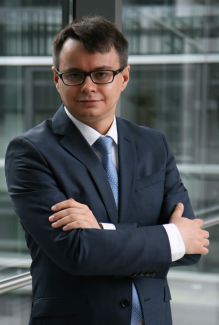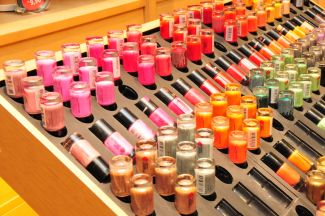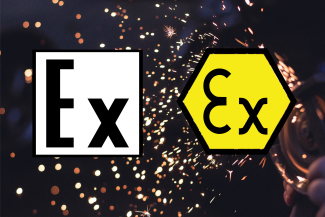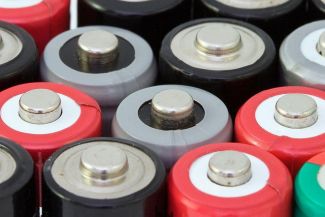
From 2024, significant changes in Russian law ensuring the uniformity of measurements will come into effect. These reforms are of great importance for all companies interacting with the Russian market. The changes include adjustments in the regulatory areas, clarifications in definitions, organizational aspects of accreditation, expansions of the reference base, and regulations for the use of measuring devices outside of Russia. In particular, for measuring devices introduced before the enactment of the law, there are special provisions, especially in the field of defense technology.
Metrological Certification or Pattern Approval Certification (PAC) - is a state supervision procedure of measuring means and measuring devices. The metrological certificate - Pattern Approval Certificate - confirms that the certified measuring devices comply with the minimum requirements of technical regulation in Russia. This means that the measurement deviation of certified devices is secured by the Russian state, and the devices themselves have been subjected to the necessary metrological and calibration tests. After the measuring device has successfully passed the metrological tests, it is entered into the state register as a measuring tool authorized for use on Russian territory and may be used in Russia from this point onwards.
The metrological certificate (Type Approval or Metrological Pattern Approval), is a certificate that confirms the conformity of the legally required measuring means with the legal regulations of technical regulation in the Russian Federation.
In Russia, the Federal Agency for Technical Regulation and Metrology - Rosstandart is responsible for the supervision of measuring means and metrological certification.
For the beginning of 2024, the adoption of amendments to the Basic Law on Metrology – Federal Law No. 102-FZ \"On Ensuring the Uniformity of Measurements\" of June 26, 2008, is planned.
Currently, the draft law was adopted on October 17, 2023, in the first reading by the State Duma.
The draft law provides for changes aimed at improving the system for ensuring the uniformity of measurements in the following main areas:
- Adjustment of the scope of state regulation to ensure the uniformity of measurements.
- Clarification of concepts.
- Changing the work organization for the certification of reference methods for change.
- Expansion of the RF reference base.
- Regulation of the use of reference quantities and measuring devices in the performance of work in the field of ensuring the uniformity of measurements outside the Russian Federation.
- The use in the field of state regulation of measurements of measuring devices that were put into operation before the law on ensuring the uniformity of measurements came into force (amended by Law No. 4871-1 of April 27, 1993, no longer in force).
- Introduction of requirements for the use of standard reference data for measurements.
- Authorization for state scientific institutes to perform certain work in the field of state regulation without accreditation.
- Implementation of changes related to the creation of the State Metrological Service of the Russian Federation.
- Changing the level of adoption of a normative legal act that regulates organizational issues of the verification of measuring devices based on calibration results (from the level of the Government of the Russian Federation to the level of federal executive bodies).
One of the most important changes of the draft law was the establishment of requirements for measuring devices that were approved for use before the first law on ensuring the uniformity of measurements came into force in our country. With the introduction of state regulations in this area, it became possible to use only measuring devices of approved type. However, numerous measuring devices manufactured before the law came into force remained outside the requirements. This is most evident in the defense industry. The upcoming changes will finally help to use these devices legally, without having to go through additional procedures that can pose a significant additional burden for companies.
We will also highlight an important aspect of the changes concerning the regulation of the use of standards for units of measurement and measuring devices in the provision of work services in the field of ensuring the uniformity of measurements outside our country. The project allows the use of measuring devices owned by foreign organizations (foreign production), but only if the traceability of these instruments to Russian state primary standards is ensured.
Many exporters find it difficult to keep track of the large number of technical regulations and regulations between EAC marking, EAC certification and EAC declaration, state registration, and GOST standards. To ensure a smooth entry into the EAEU market, we offer a wide range of seminars, lectures, workshops, and consulting services that can be individually tailored to specific needs.
In this rapidly changing regulatory environment, Schmidt & Schmidt provides comprehensive support for exporters to the Russian Federation, Kazakhstan, and the EAEU states. Our service portfolio includes EAC certification, adaptation to specific product categories, and customized solutions to comply with the technical and legal requirements of these markets. We are committed to facilitating companies' market entry and expansion in these regions by always providing the latest information and guidelines.
Technical expertise, diligence, and accuracy in the preparation of documents are prerequisites for trouble-free distribution and use of products, machines, or systems in the EAEU area. The technical documents must also be written in Russian or the official language of the respective member country where the product is to be distributed or used.
To avoid any problems, we are happy to assist in creating new technical documents or reviewing existing documents for completeness, as well as for linguistic and terminological correctness in Russian.
Thanks to their many years of experience, our experts can also provide specific industry knowledge from plant construction, mechanical engineering, metal construction, measurement technology, electrical engineering, automation technology, medical technology, food technology, and the furniture industry.





